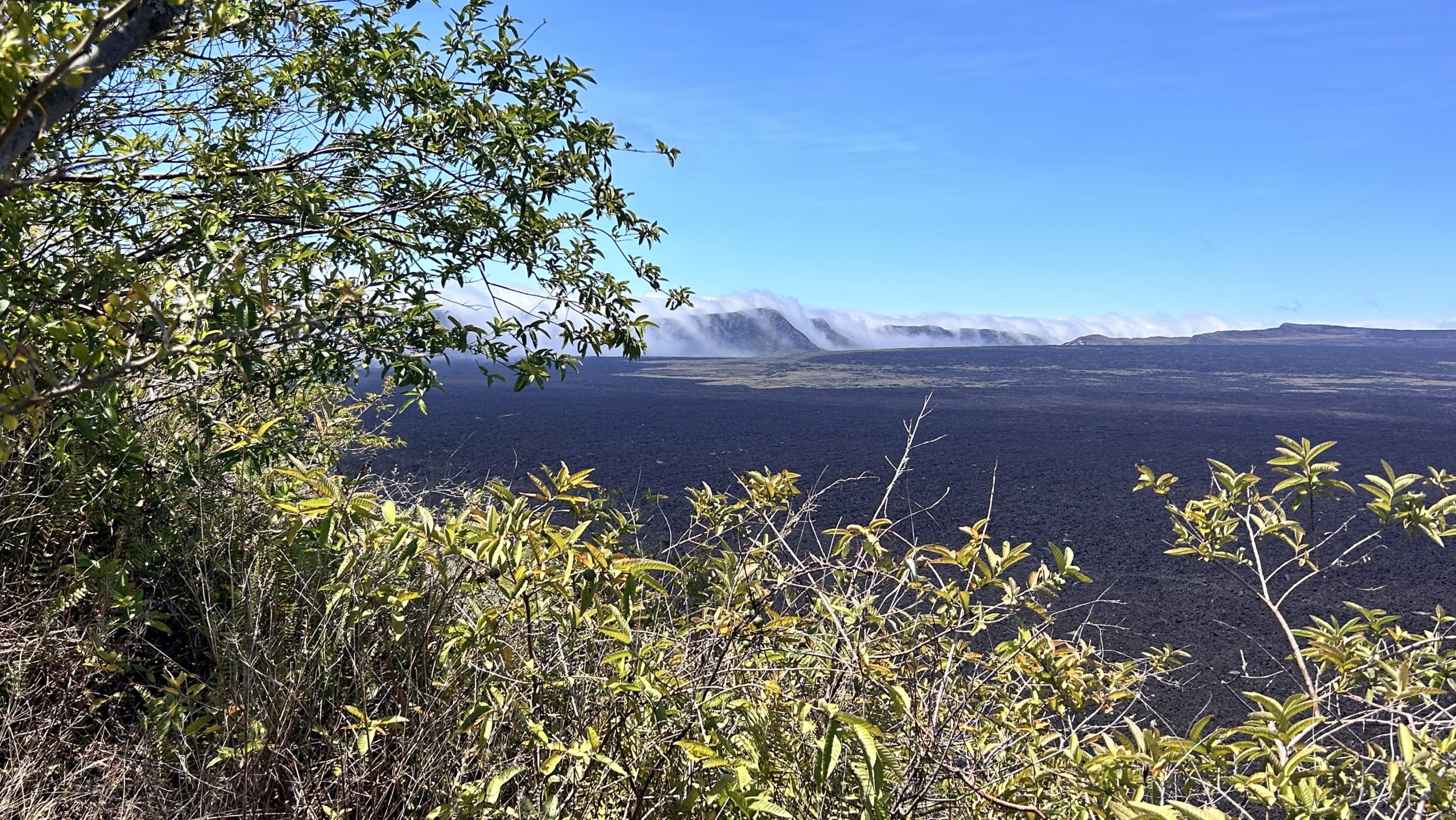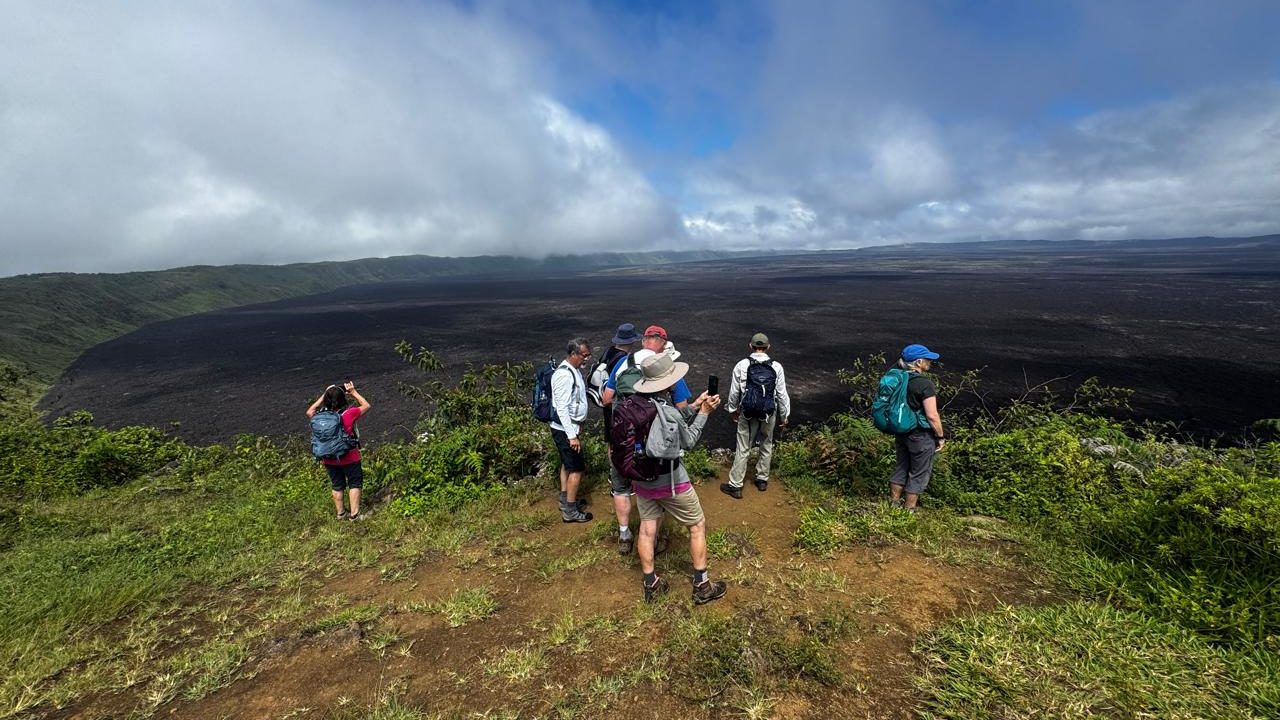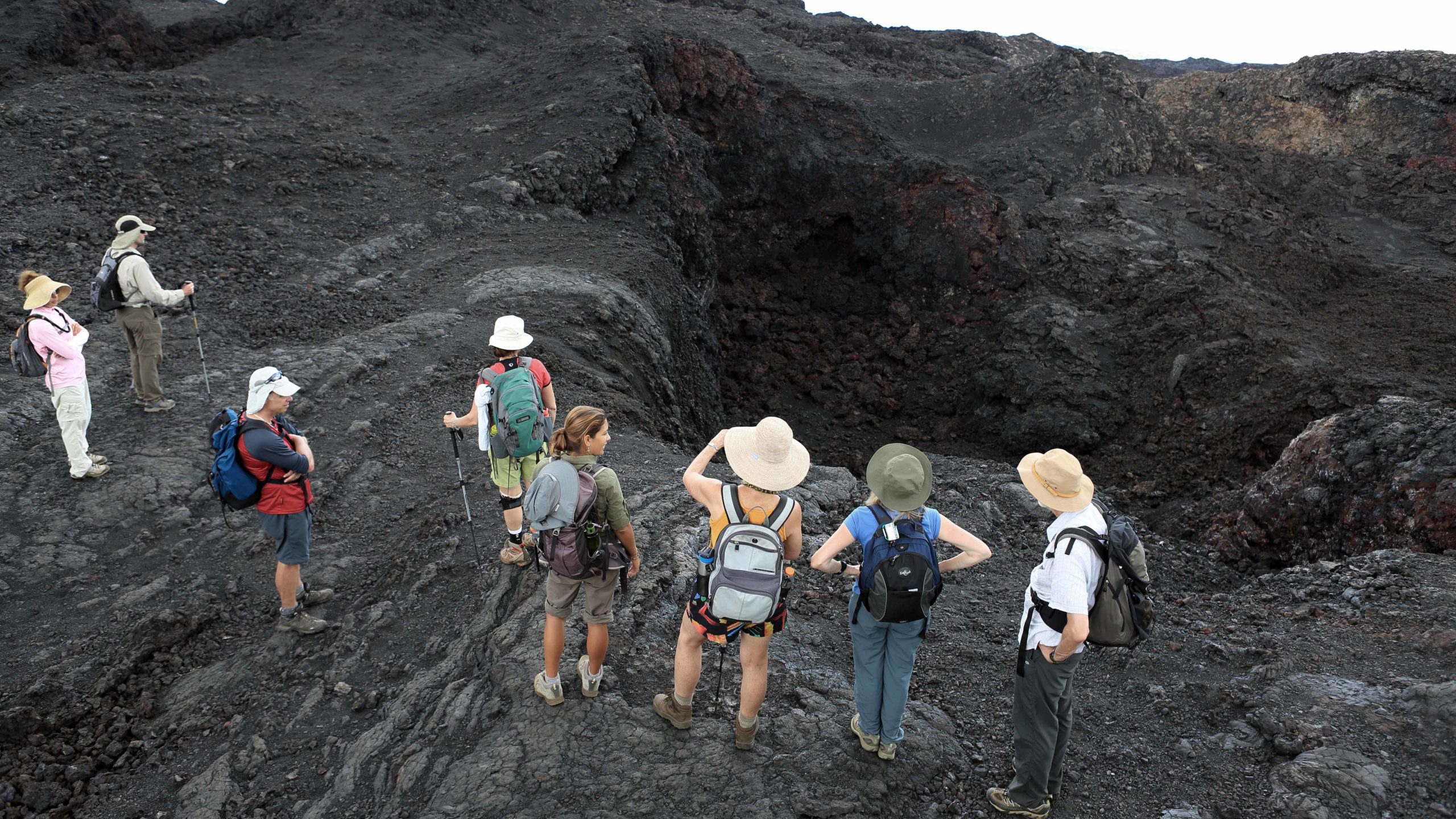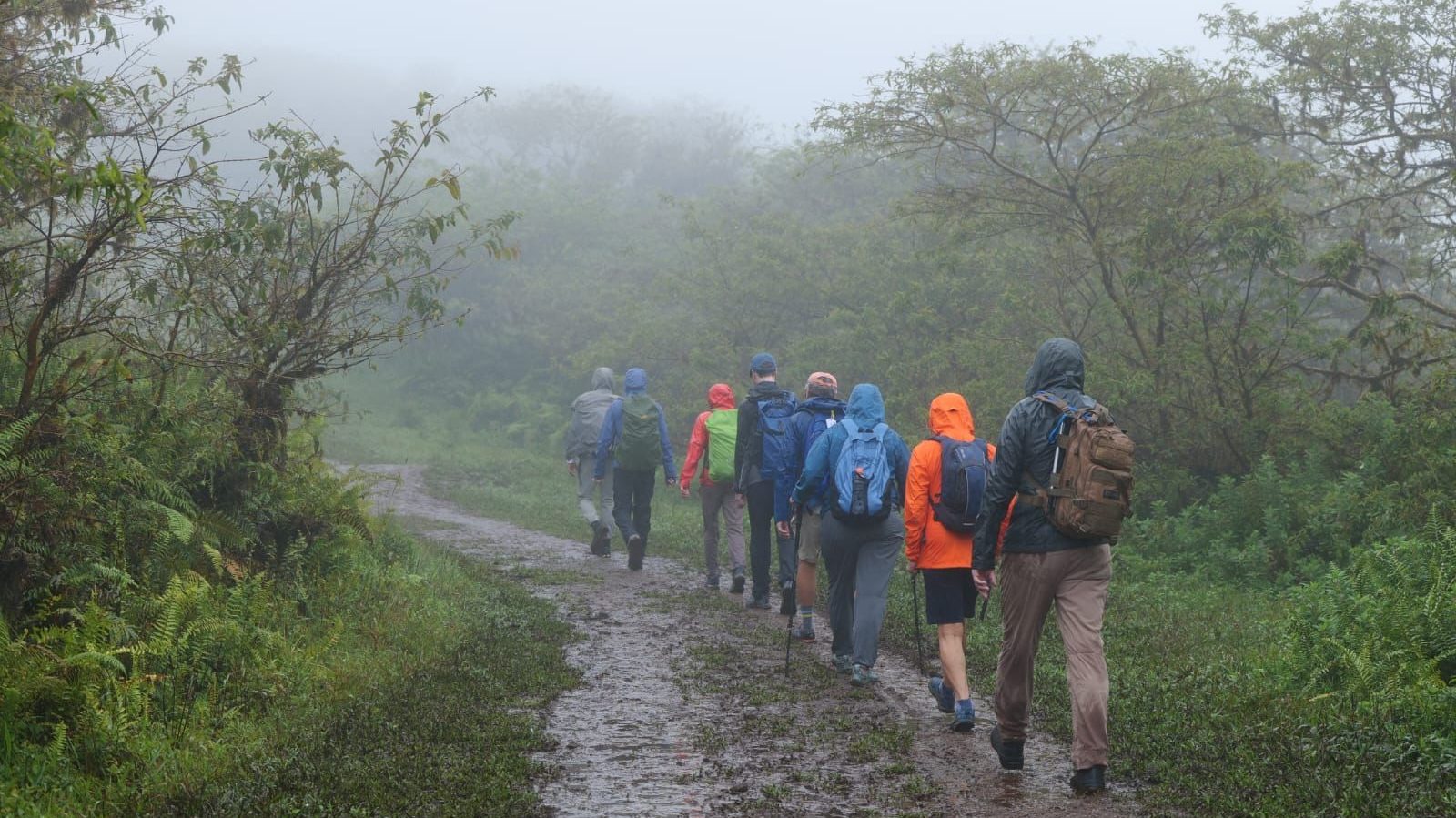November 18, 2025
Hiking the Sierra Negra Volcano: Into the Heart of Isabela Island

Standing on the rim of the second-largest volcanic crater in the world, it’s easy to forget you’re still on the same island where penguins waddle nearby. That’s the magic of the Galápagos: one day you’re snorkeling with sea lions, the next, hiking across an otherworldly lava field.
Sierra Negra Volcano, on Isabela Island, is one of the archipelago’s most impressive and active volcanoes. It’s a must-visit for adventurers, photographers, and geology enthusiasts, or anyone wanting to experience the raw power of nature that has shaped these fire-born islands.
If Sierra Negra is on your Galapagos adventure list, here’s everything you need to know.
Where Is Sierra Negra and Why Is It Special?
Sierra Negra sits on Isabela Island, the largest island in the Galápagos. Isabela itself was formed by six volcanoes, and Sierra Negra is both the oldest and one of the most active. Its last eruption in 2018 was a spectacular reminder of the islands’ volcanic origins, briefly closing the hiking route but leaving behind incredible new landscapes to explore.
What truly makes Sierra Negra jaw-dropping is its massive caldera, roughly 10 kilometers (6 miles) wide, one of the largest in the world. Standing at the rim, gazing out over black lava flows and steaming vents, feels like stepping onto another planet.
Today, hikers can still spot traces of the 2018 eruption, shiny new scoria rock, fresh lava paths, and even lava molds of trees that once stood at the crater’s edge.
Both locals and scientists monitor Sierra Negra closely, but visitors can breathe easy: tours are only conducted when it’s safe, and certified guides stay in constant contact with park authorities. Safety always comes first.

What’s the Hike to Sierra Negra Like?
Hiking Sierra Negra is one of the most popular land adventures in the Galápagos, and for good reason.
- Distance: Approximately 7 miles (round trip)
- Time: Around 5 hours
- Difficulty: Moderate. Not technical, but the trail can be rocky in places
- Elevation: Starts around 1,000m (3,280 ft). It’s not extreme altitude, but some sections feel steep
The trail begins in lush highland forest, occasionally muddy after rain. As you climb higher, the scenery transforms into open lava fields with breathtaking views of the massive caldera. Hiking here is like walking through a living geology museum, dramatic, dynamic, and unforgettable. For a firsthand account, check out one of our guest experiences on Wander the Map.
Wildlife Around Sierra Negra
While the upper slopes feel stark and moonlike, the area surrounding Sierra Negra is surprisingly rich in wildlife. Keep your eyes peeled for:
- Giant tortoises especially in the greener, lower zones
- Galápagos hawks a breathtaking sight if you spot them gliding along the crater rim
- Small birds from curious Darwin’s finches and yellow warblers to the vibrant vermilion flycatcher
- Lava lizards basking on the sun-warmed volcanic rocks
Sierra Negra sits at the intersection of humid highlands and dry volcanic terrain, so the changing habitats along the trail are as fascinating as the wildlife itself. Each step reveals a new layer of the island’s incredible biodiversity a new layer of the island’s incredible biodiversity.

Tips for Visiting Sierra Negra
Make the most of your Sierra Negra adventure with these smart, practical insider tips:
✅ Dress smart for changing weather
Mornings tend to be clearer, but clouds and rain often appear by afternoon. Wear layers, pack a light rain jacket, and bring sun protection, you’ll likely need all three.
✅ Wear proper footwear
The trail can be rocky or muddy, especially after rain. Sturdy hiking shoes will make the experience safer and far more comfortable.
✅ Take your time
This isn’t a hike to rush. Pace yourself and soak in the otherworldly volcanic views, they’re what make Sierra Negra unforgettable.
✅ Respect the land and listen to your guide
Our guides share fascinating info about the geology, wildlife, and history of the area. Stay on marked paths and help protect this fragile ecosystem.
💡 Fun fact: Many travelers call Sierra Negra one of the most surprisingly epic parts of their Galápagos journey. It’s a must-see!

What to Bring for the Sierra Negra Hike
You don’t need any special gear for this hike, just comfort, protection, and a sense of adventure. Here’s what we recommend:
- Sturdy walking shoes or light hiking boots the trail can get rocky or muddy, and comfortable hiking socks are a big plus for extra comfort.
- Daypack with water and snacks (when you travel with Galakiwi, a packed lunch is included)
- Hat and sunglasses
- Sunscreen the equatorial sun is strong, even when it’s cloudy
- Light rain jacket or poncho, weather can shift quickly
- Camera or phone, you’ll want photos at the crater edge
- At least 2 liters of water per person
And of course, bring your curiosity, energy, and positive attitude. Sierra Negra has a way of rewarding every step.
Whether you’re a family seeking a one-of-a-kind adventure or a traveler drawn to dramatic volcanic landscapes, Sierra Negra delivers. It’s one of the few places on Earth where you can safely walk across recent lava flows and peer into an active volcanic crater, all in a single morning.
With Galakiwi, the hike becomes more than just a walk. Our expert guides turn every step into a story, connecting you to the volcano’s geology, wildlife, and cultural significance. On our land-based Galápagos tours, the Sierra Negra hike is a highlight on Isabela Island, giving you time to explore at a relaxed pace without feeling rushed.
Join us on your next Galápagos adventure and experience Sierra Negra the Galakiwi way, with immersive, inspiring, and unforgettable land-based tours.
